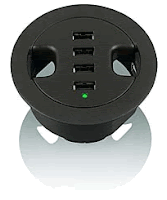Over the past 40 years, humans have been responsible for just about half of all documented North Atlantic right whale deaths. Of those caused by humans, roughly a quarter are from fishing gear entanglement, and three-quarters are from ship strikes. The whale's propensity to feed by slowly skimming just below the water's surface is what makes them especially vulnerable to ship strikes.
Technology deployed by the Right Whale Listening Network, a project of Cornell University's Bioacoustics Research Program, is an effort to reduce ship strikes within the shipping lanes leading into Massachusetts Bay. In 2008, they installed buoys which can listen for and detect a whale's call from up to 5 miles away. The resulting map (below) shows any detected right whale calls in near real-time:
The green dots on the map above show locations of buoys listening for endangered right whales. If you see a red whale icon instead, it means that the buoy has heard a right whale within the last 24 hours. This information is made available to NOAA and to ship captains, so they may slow to 10 knots and post a lookout to avoid a collision.
(Note: Right whales often leave Massachusetts Bay in spring. If you don't see any whale detections here, see this archived map from April 2008.)







